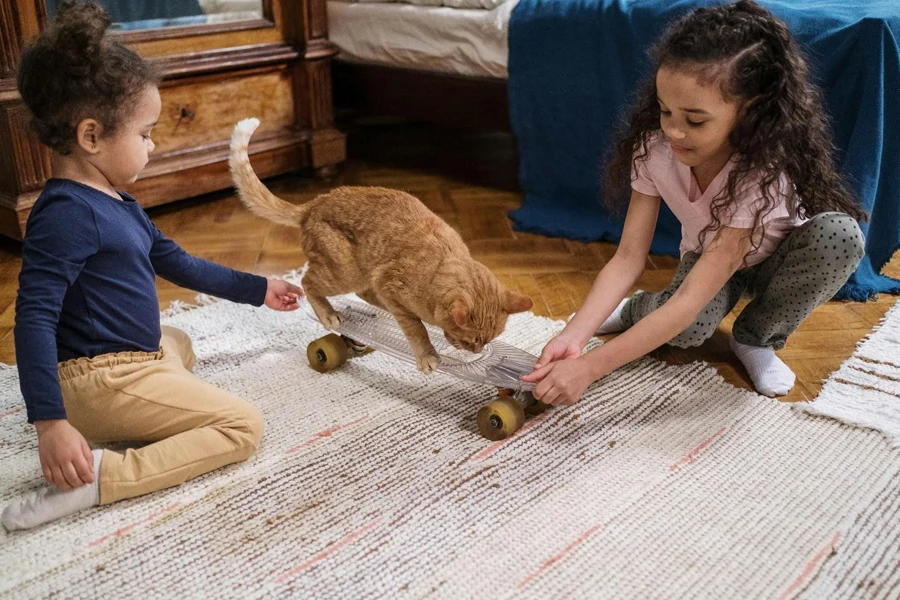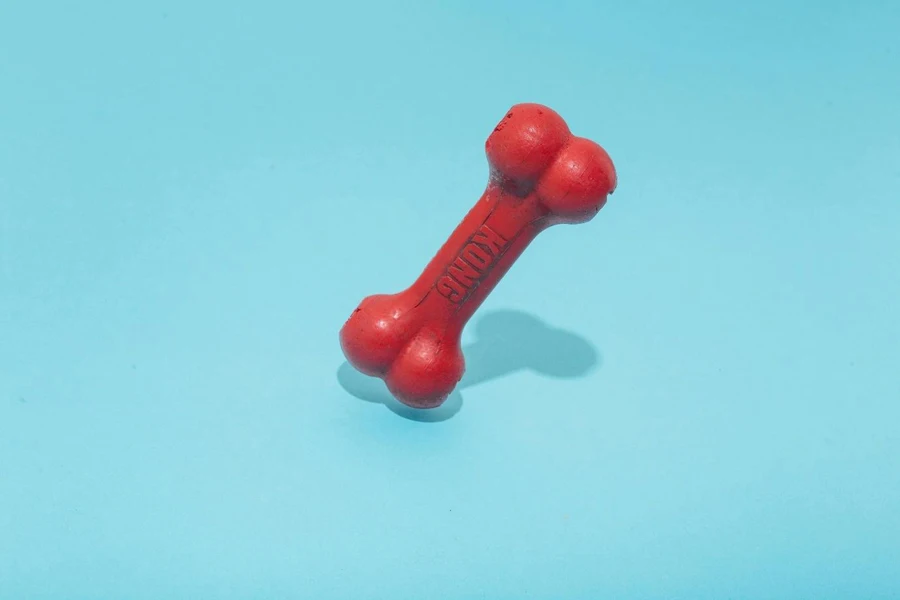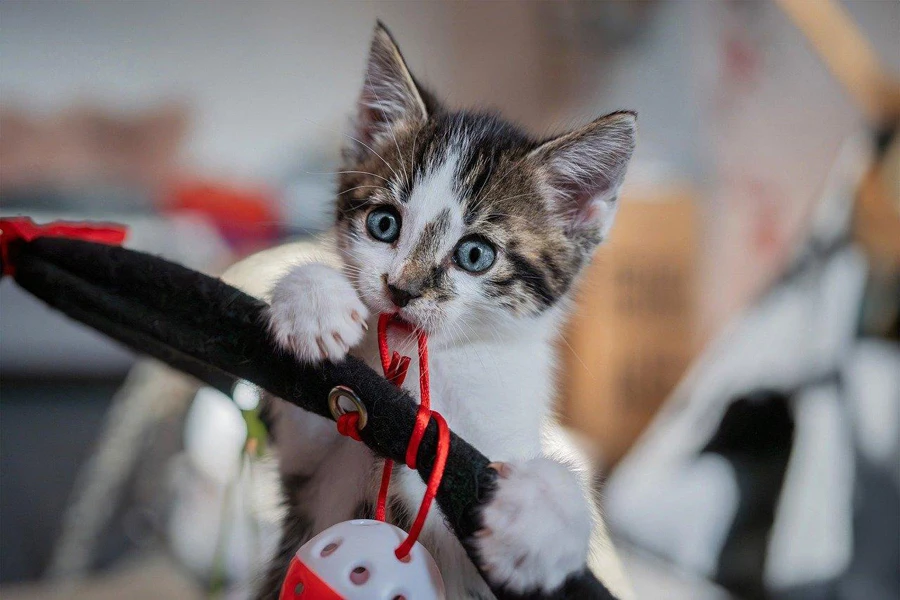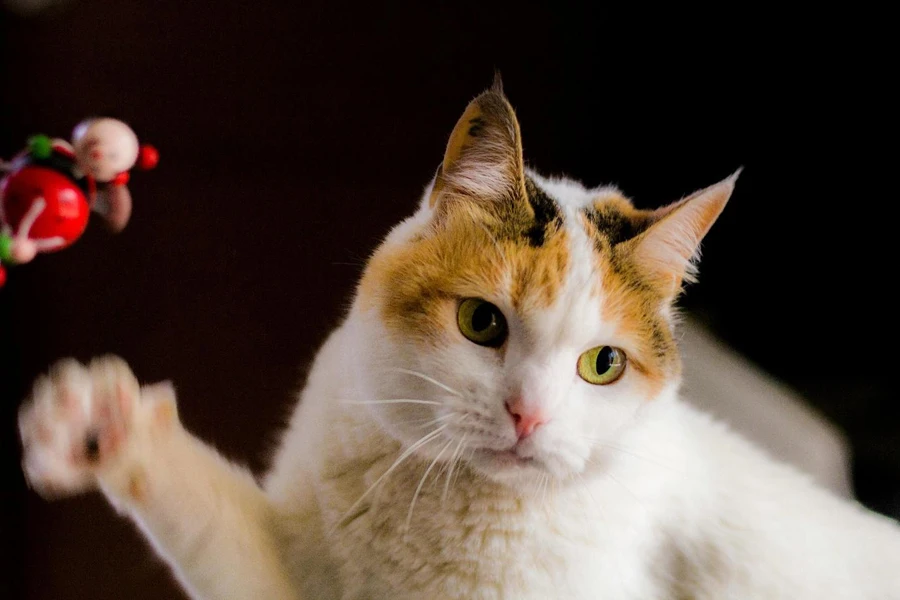Toys encouraging interaction and movement are important for keeping pets healthy and happy mentally by engaging them in play and exercise activities. With the increasing interest in pet items, stores must stay updated on consumer preferences. The popularity of high-tech toys that respond to pets shows a move towards exciting ways to care for animals. This piece explores the growing toy market and provides useful advice on choosing the best products for retailers. Keeping up to date with the information enables companies to meet the increasing demand for premium and captivating toys.
Table of Contents
● A growing market: interactive pet toys on the rise
● Types of interactive and movement toys your pet will love
● Key factors to consider when buying pet toys
● Conclusion
A growing market: interactive pet toys on the rise

Pet toys market overview
The worldwide market for toys was worth $8.88 billion in 2023. It is expected to increase substantially to $16.81 billion by 2030. This rapid expansion is fueled by the growing recognition of the importance of pets’ mental and physical health. Many pet parents are now purchasing items that encourage interaction and playtime. Grand View Research predicts that the market will experience a 9.8% CAGR from 2024 to 2030 due to the rising trend of treating pets as part of the family and a heightened emphasis on their well-being.
CAGR and demographic drivers
Young adults, known as millennials, play a big role in the increasing popularity of unique and engaging pet products as they make up a significant portion of pet owners today. Around 33% of millennials have pets, driving the demand for high-quality toys that provide physical and mental stimulation for their furry friends. In 2023, North America remained at the forefront with a market share of 31.86% globally, while the Asia Pacific region is seeing growth due to urbanization and increasing disposable incomes. According to an article in the South China Morning Post, the number of city dwellers owning pets in China has increased by 10.2% from 2018 to 2020, leading to a need for engaging accessories and toys.
Innovative products shaping the market
Technology-infused items are transforming the pet toy industry as interactive playthings, like smart toys and puzzle feeders. These products are gaining traction among owners for their entertainment and mental enrichment benefits to animals in addressing loneliness and monotony concerns. The trend of tech-driven gadgets is projected to expand, with manufacturers focusing on developing gadgets that promote pets’ cognitive and physical involvement via smartphone-controlled tools and automatic gameplay features.
Types of interactive and movement toys your pet will love

Treat-dispensing toys
Toys that dispense treats challenge pets mentally and physically using mechanisms like sliding panels and rotating parts that they need to manipulate to access the rewards inside. Some of these toys have puzzles that have difficulty engaging pets’ abilities. Over time, they are often crafted from high-density BPA-free plastic for safety and durability. Some sophisticated models even have options to adjust the difficulty level for users to raise the challenge as their pets improve in puzzle-solving skills over time. These toys can also help pets who eat quickly by serving as slow feeders to encourage digestion by slowing their food intake.
Puzzle toys
Puzzle toys are engineered with complex structures, featuring multiple moving parts that pets must interact with to achieve success. Some designs incorporate hidden compartments or sliding panels that require precision and problem-solving, helping to stimulate pets mentally while keeping them engaged for extended periods. High-end models often use silicone grips or non-skid bases to prevent the toy from slipping, even when pets push, paw, or nudge vigorously. Materials like thermoplastic elastomers (TPE) ensure durability while being gentle on pets’ paws and mouths, making these toys both safe and long-lasting. Advanced puzzle toys often include multi-layered challenges, where pets need to sequence actions correctly to unlock each level.
Responsive and movement toys
Responsive toys are equipped with motion sensors, sound triggers, or even artificial intelligence that reacts to a pet’s movements. Some toys are designed with gyroscopes to ensure smooth, unpredictable movement patterns, while others feature random timing mechanisms that prevent pets from anticipating how the toy will respond, making playtime more engaging. Certain responsive toys utilize rechargeable batteries or USB charging for long-term use, and many include interactive elements such as flashing LED lights or built-in speakers that produce sounds mimicking prey. These features simulate companionship and trigger a pet’s natural predatory instincts, particularly in breeds prone to anxiety or hyperactivity.
Fetch and chase toys
Fetch and chase toys range from simple balls to sophisticated automatic launchers with programmable settings. Many automatic ball launchers allow owners to adjust the launch distance between 10 to 30 feet, catering to different play environments and pet sizes. These devices typically operate with rechargeable lithium-ion batteries, providing hours of play, and are often made from reinforced rubber or polyurethane, ensuring they can withstand aggressive play. Some models include motion sensors that allow them to pause and resume based on the pet’s movement, adding an element of unpredictability to play sessions. Additionally, textured surfaces on balls enhance grip for dogs, improving their ability to retrieve and hold onto the toy.
Tug and chew toys with added interactivity

Toys for tugging and chewing are made from rubber (TPR) or ballistic nylon to withstand rough play from active chewers. Tug toys sometimes include parts that provide resistance during playtime for more interactive tug-of-war sessions between pets and their owners or other pets. Chew toys may have raised bumps or ridges that help pets’ teeth as they chew to minimize the accumulation of plaque and tartar. Certain tug toys come with squeakers or secret compartments for treats, providing more ways for pets to play and stay entertained for periods. Quality Toys in this group usually undergo testing to guarantee safety when used vigorously.
Hide-and-seek toys
Toys for playing hide and seek with pets often have parts that can be taken off or compartments where you can hide treats or small toys. These toys might have many layers or sections of felt or plush fabric that pets can dig into or push aside to find the goodies. Some of these toys also come with detachable parts you can wash in a machine for ease of cleaning and to keep them hygienic even after lots of playtime. Keeping pets active and entertained during activities, like searching for toys with features such as squeakers or crinkling sounds, can help engage their auditory senses effectively. The toys are specifically crafted to stimulate a pet’s natural hunting instincts while offering stimulation and physical exercise when solving the puzzle.
Key factors to consider when buying pet toys

Pet size, breed, and age
When choosing toys for your pets, fun, and mental stimulation must be considered by their size or breed and how old they are to ensure the toy is safe and enjoyable for them to play with. Larger breeds with strong jaws need tough toys to withstand their powerful chewing habits. At the same time, smaller pets prefer softer toys made from gentle materials for a more comfortable play experience. For puppies and kittens, teething toys are an option as they relieve teething discomfort and encourage healthy chewing behaviour. Older pets may benefit from toys with gentle textures for their aging teeth and joints. It’s important to select toys that are appropriate for the size and age of your pet to avoid any risks that may arise from using toys that are too small or too big for the pet.
Durability and materials
For aggressive chewers, durability is crucial. Choosing toys crafted from rubber (TPR), ballistic nylon, or reinforced rubber can help prevent any safety hazards associated with breakable items. It’s essential to pick toys made from toxic materials to ensure your furry friend doesn’t accidentally ingest any harmful substances. Moreover, conscious options such as rubber or sustainable fibers are gaining popularity, offering both toughness and eco-friendly benefits. Making sure that toys are designed for longevity helps save money and minimizes waste, which is why eco-friendly choices appeal to mindful consumers.
Purpose of the toy
Choosing the toy that suits your pet’s needs is important to get the most out of it. Puzzle toys or treat dispensers are great for keeping active pets entertained and warding off boredom, while toys like fetch balls or automatic launchers are perfect for pets that need activity to stay fit and healthy. If your pet suffers from separation anxiety, toys that mimic interaction can offer solace and help them relax. It’s important to consider your pet’s unique requirements to ensure the toy fulfills its purpose effectively, be it encouraging activity, supporting growth, or enhancing emotional health.
Ease of cleaning and maintenance
Toys designed with treats or food should be simple to clean to prevent bacteria buildup and uphold cleanliness standards in pet care routines. Opt for materials like silicone or dishwasher-safe plastics for effortless maintenance that can withstand repeated washing without losing quality. For plush or fabric toys prone to getting dirty with drool or dirt, opt for machine-washable options to keep them fresh. Choosing toys that can be easily sanitized regularly helps maintain a healthy environment for your pet and reduces the chances of infections associated with hygiene practices.
Safety regulations and certifications
Making sure that toys adhere to safety regulations is essential for safeguarding pets from any dangers they may face while playing with them. It’s important to choose items approved by organizations like the FDA or ASTM since these certifications guarantee that the toys have undergone testing to ensure their safety and durability and are free of toxic substances. Moreover, toys must be designed to reduce the risk of choking incidents for pets. When products carry these certifications, it indicates that the materials used are pet-friendly and harmless, reassuring buyers as they make their selections.
Conclusion

Choosing the perfect activity toys is essential for improving pets’ physical and mental health to keep them active and healthy while staying engaged. With a wide range of options, from puzzle toys that stimulate cognitive growth to fetch toys that promote physical activity, companies must make well-informed buying choices that meet various pet requirements. Well-crafted, durable, and safe toys enhance a pet’s general well-being while minimizing the possibility of behavioral problems. Retailers can fulfill the increasing need for pet care options and promote ethical pet ownership by providing top-notch and verified products.




